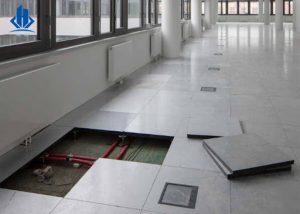Today the flooring with raised access is mostly utilized to create IT data centers as well as computer rooms that need UFAD. The wiring and cables are run beneath the floor, too.
A telecommunications center is typically comprised of continuous lines of cabinets for equipment. They typically feature the highest populated configuration of installations in the area of square feet and, consequently the highest floor load expected for a floor that is raised.
Within data centers, air conditioning zones are usually linked to raised floors. Floor tiles with holes are set underneath computer systems to direct cool air into them. The computing equipment is specifically designed to draw the conditioned air from below and into the room.to know more click here: www.bspfloors.com.

Traditional post and panel raised floors are not used in a telecommunications/data center environment. There are a variety of different kinds of raised flooring systems that could be used instead :
- Stringerless raised floors: With this type of flooring, a set of pedestals (posts) offer the required space for the cables to be routed as well as supporting each corner of the flooring panels. No stringers for horizontal use are needed.
- Stringer raised floors: The type of flooring comprises an array of pedestal assemblies made of steel (that comprise the base plate of steel as well as a tubular upright and ahead) which are evenly placed on 2-foot centers and are mechanically attached to concrete floors.
- Structural platforms: elements of this system are made from steel channels or angles that are bolted or welded together to create an integrated platform to support equipment.
- Truss assembly: The method uses attachment points to the subfloor to provide the framework of a truss that the floor panels are placed. Trusses have a high strength laterally and can transfer the subfloor’s lateral load in a less stressful way than the vertical pedestal assembly.